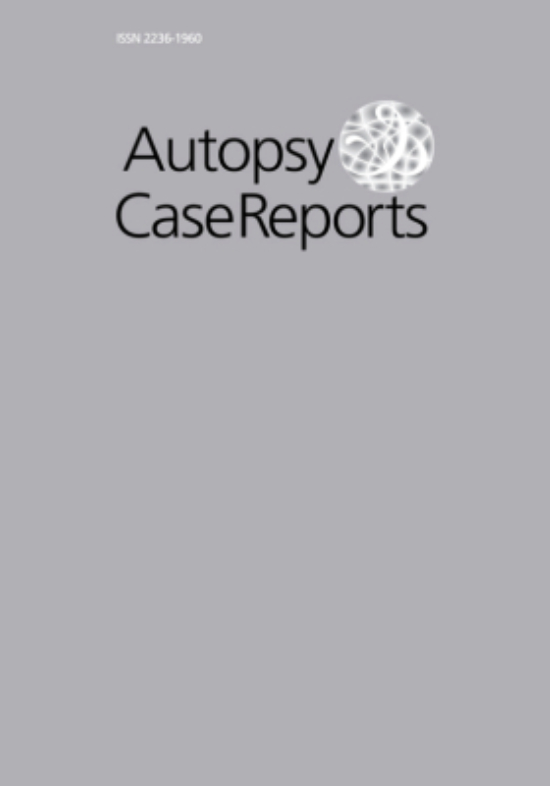Explant pathology in Biliary Atresia post Kasai procedure: a tale of two livers
DOI:
https://doi.org/10.4322/acr.2024.521Keywords:
Neonatal cholestasis, Biliary atresia, Cholangitis, Portal hypertension, Hepato-porto-enterostomyAbstract
Biliary atresia (BA) is a progressive inflammatory cholangiopathy of infancy that results in fibrous obliteration of the extrahepatic and intrahepatic bile ducts. In untreated patients, this leads to biliary-type cirrhosis within the first two years of life. Timely diagnosis of BA with a lack of significant hepatic fibrosis is critical and surgical drainage (Kasai procedure) within the first two months of life is the initial treatment modality with the highest success rate. Ultimately, liver transplantation is required due to surgical drainage complications, such as recurrent cholangitis, failure to thrive, and portal hypertension (PHTN). Histopathological findings of hepatectomy specimens after failed and successful Kasai procedures are vastly different depending on the subsequent course of liver disease. Bile flow is inadequate following a failed Kasai procedure with rapid development of biliary cirrhosis. Explants from patients with successful Kasai procedure may show cholestatic (recurrent cholangitis), vascular (obliterative venopathy, regenerative hyperplasia, and PHTN), or an interplay of both cholestatic and vascular abnormalities. Pathologists need to be aware of explant histopathology (post-successful Kasai procedures) with a clinical course dominated by PHTN for precise documentation of vascular abnormalities.
Downloads
References
Kahn E. Biliary atresia revisited. Pediatr Dev Pathol. 2004;7(2):109-24. http://doi.org/10.1007/s10024-003-0307-y. PMid:14994122.
Moyer V, Freese DK, Whitington PF, et al. Guideline for the evaluation of cholestatic jaundice in infants: recommendations of the North American Society for Pediatric Gastroenterology, Hepatology and Nutrition. J Pediatr Gastroenterol Nutr. 2004;39(2):115-28. PMid:15269615.
Sokol RJ, Mack C, Narkewicz MR, Karrer FM. Pathogenesis and outcome of biliary atresia: current concepts. J Pediatr Gastroenterol Nutr. 2003;37(1):4-21. PMid:12827000.
Bassett MD, Murray KF. Biliary atresia: recent progress. J Clin Gastroenterol. 2008;42(6):720-9. http://doi.org/10.1097/MCG.0b013e3181646730. PMid:18496390.
Chardot C, Carton M, Spire-Bendelac N, Le Pommelet C, Golmard JL, Auvert B. Prognosis of biliary atresia in the era of liver transplantation: french national study from 1986 to 1996. Hepatology. 1999;30(3):606-11. http://doi.org/10.1002/hep.510300330. PMid:10462364.
Patel KR, Harpavat S, Khan Z, et al. Biliary atresia patients with successful kasai portoenterostomy can present with features of obliterative portal venopathy. J Pediatr Gastroenterol Nutr. 2020;71(1):91-8. http://doi.org/10.1097/MPG.0000000000002701. PMid:32187144.
Patel KR, Dhingra S, Goss J. Liver explants of biliary atresia patients transplanted in adulthood show features of obliterative portal venopathy: case series and guidelines for pathologic reporting of adult explants. Arch Pathol Lab Med. 2023;147(8):925-32. http://doi.org/10.5858/arpa.2022-0057-OA. PMid:36343369.
Nio M. Japanese biliary atresia registry. Pediatr Surg Int. 2017;33(12):1319-25. http://doi.org/10.1007/s00383-017-4160-x. PMid:29039049.
Parolini F, Boroni G, Milianti S, et al. Biliary atresia: 20-40-year follow-up with native liver in an Italian center. J Pediatr Surg. 2019;54(7):1440-4. http://doi.org/10.1016/j.jpedsurg.2018.10.060. PMid:30502004.
Gautier M, Eliot N. Extrahepatic biliary atresia. Morphological study of 98 biliary remnants. Arch Pathol Lab Med. 1981;105(8):397-402. PMid:6894845.
Stringer MD, Heaton ND, Karani J, Olliff S, Howard ER. Patterns of portal vein occlusion and their etiological significance. Br J Surg. 1994;81(9):1328-31. http://doi.org/10.1002/bjs.1800810923. PMid:7953402.
Hussein A, Wyatt J, Guthrie A, Stringer MD. Kasai portoenterostomy--new insights from hepatic morphology. J Pediatr Surg. 2005;40(2):322-6. http://doi.org/10.1016/j.jpedsurg.2004.10.018. PMid:15750923.
Geha JA, Galvan NTN, Rana A, Geha JD, O’Mahony CA, Goss JA. Replacement of the portal vein during orthotopic liver transplantation in the patient with biliary atresia. Pediatr Transplant. 2018;22(7):e13280. http://doi.org/10.1111/petr.13280. PMid:30105818.
Takahashi A, Hatakeyama SI, Kuroiwa M, et al. Time-course changes in the liver of biliary atresia patients on magnetic resonance imaging. Pediatr Int. 2009;51(1):66-70. http://doi.org/10.1111/j.1442-200X.2008.02657.x. PMid:19371280.
Hofmann JJ, Zovein AC, Koh H, Radtke F, Weinmaster G, Iruela-Arispe ML. Jagged1 in the portal vein mesenchyme regulates intrahepatic bile duct development: insights into Alagille syndrome. Development. 2010;137(23):4061-72. http://doi.org/10.1242/dev.052118. PMid:21062863.
Downloads
Published
Issue
Section
License
Copyright (c) 2024 Sunayana Misra, Sonia Badwal, Shashi Dhawan, Arpita Mittal, Naimish Mehta, Nishant Wadhwa, Arjun Maria

This work is licensed under a Creative Commons Attribution 4.0 International License.
Copyright
Authors of articles published by Autopsy and Case Report retain the copyright of their work without restrictions, licensing it under the Creative Commons Attribution License - CC-BY, which allows articles to be re-used and re-distributed without restriction, as long as the original work is correctly cited.



